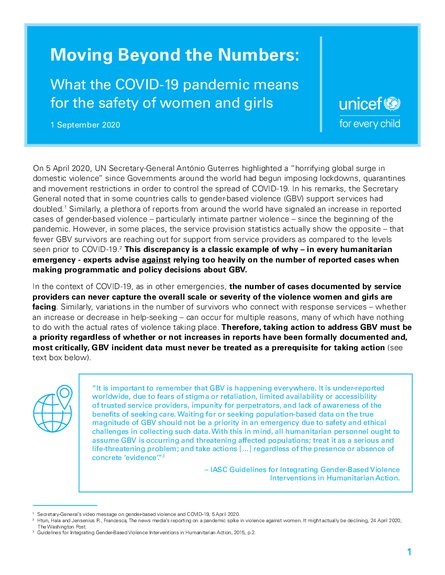
Since the beginning of the lockdowns and quarantine restrictions enacted by Governments to respond to the COVID-19 pandemic, the world is witnessing a horrifying surge- a surge of what was already an epidemic- in gender-based violence (GBV), particularly intimate partner violence. A plethora of reports from across the globe have indicated an increase in reported cases, as well as deaths. Yet at the same time, some of the figures actually show the opposite – that fewer GBV survivors are contacting service providers than before the pandemic. In order to make effective policy and programming decisions, governments, policymakers and donors must go beyond the numbers and aim for a more comprehensive understanding of dynamics driving pre-existing violence against women and girls and how the current environment exacerbates these risks. The increased threat to women and girls is predictable based on patterns of abuse and violence that existed before the COVID-19 pandemic. Quarantine and confinement measures increase the risks of GBV and, as a result, will worsen the severity of the violence experienced by women and girls. This article illustrates some of the limitations of the statistics that have been widely publicized in the context of the COVID-19 pandemic, provides additional contextual information to better understand the risks women and girls are facing, and outlines some priority recommendations to Governments, policy makers, donors and key humanitarian and development actors for addressing gender-based violence in the context of COVID-19.